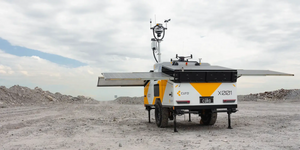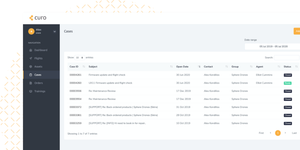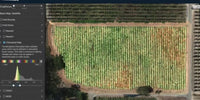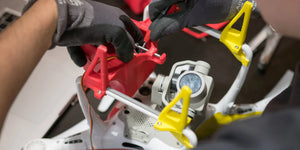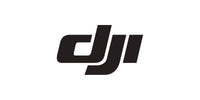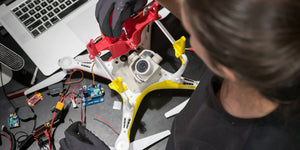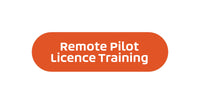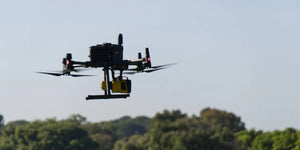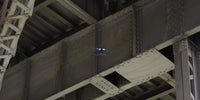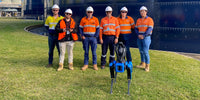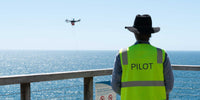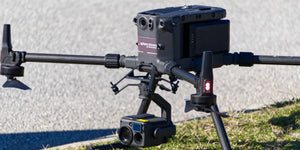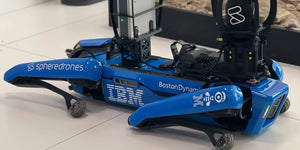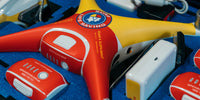Two years ago, MicaSense spent some time on our blog digging into the specifics of radiometric calibration. In the first article, Let’s Talk About Calibration, MicaSense attempted to define radiometric calibration and illustrate its importance in multispectral imagery.
Once that groundwork had been established, MicaSense moved on to discuss the effects of different lighting conditions on radiometric quality in the data and some ways to mitigate these and improve data quality in our second article, Capturing Multispectral Data in Ideal and Adverse Lighting Conditions. In this third post on calibration, MicaSense will share some experiences and use cases from a specific customer that relate directly to the importance of radiometric calibration.
aerialPLOT, a software analytics and services company focused on small-plot agriculture research-based in Troy, Ohio, uses calibrated multispectral data to unlock information about their customers’ small research plots that would not be possible otherwise.
“We’re using the MicaSense Dual Camera System,” said Jeremiah Roeth, President and founder of aerialPLOT, “it’s the preferred system because the data outputs fully leverage the high throughput software tools we’ve developed around small plot research here at aerialPLOT.”

In particular, aerialPLOT has been able to leverage calibrated multispectral data through season-long drone captures, resulting in strong correlations to ground data, including final yield outcomes.
“If you were to only fly once per season or even if you were to fly multiple times per season without radiometric calibration, you would be missing out on the value that can be derived from an accurate crop growth curve for the year–it unlocks a full season perspective of the test plots and their different treatments. Seeing small deviations in the plots across treatments is something our clients require and that’s where our methodologies deliver a lot of value.”
Some of the most promising and exciting new products being developed in agriculture are bio stimulants and biologicals, where mitigation of in-season crop stress is critical to realize full yield potential. Faster, more effective development of these kinds of products can be done with a better understanding of how test plots perform throughout the season. “Our platform, paired with MicaSense camera data, truly allows plant breeders and agronomists to see the growth response of the crop in real time. The development of next generation products in agriculture necessitates this type of approach,” says Roeth. aerialPLOT has spent the past 6 years validating this methodology on hundreds of trials conducted at Buckeye Ag Testing, a premier contract research farm in Ohio run by the Roeth family. In addition to a strong foundation in agricultural research, aerialPLOT leverages cloud-based analytics, machine learning, and process automation through a close partnership with the Ohio-based software engineering firm, RoviSys.
aerialPLOT has conducted several experiments looking at the impact of calibration on plot-based imagery used to measure crop health. Consistently, the radiometrically calibrated data was producing tighter, more accurate results compared to uncalibrated data.
In one study, full radiometric calibration resulted in an average of a 19.6 % change in the vegetative index values, demonstrating the importance of factoring the actual solar irradiance during the flight. This was observed using both MicaSense cameras as well as a 3rd party multispectral camera. Moreover, when looking at image-derived plot metrics for repeated flights in a time series, experimental variability was dramatically reduced with radiometric calibration compared to that which was not calibrated (66.8 % reduction in variance).

The example below shows a proof-of-concept test of two different nitrogen treatments on corn test plots in 2020 conducted by aerialPLOT. On the left, RGB data from a late season time series was captured from both a reduced nitrogen treatment and a normal nitrogen treatment. By eye, it is very difficult to detect a difference between nitrogen treatments over the course of the season using the RGB images. On the other hand, radiometrically calibrated multispectral data from the RedEdge-MX clearly shows an increased persistence in greenness in corn that received the full nitrogen rate through the end of the season.
Beyond looking at the spatial image outputs, image analytics using the aerialPLOT software demonstrates the differences in senescence profiles of the crop in response to different nitrogen levels The top panels show the graphs representing values from common vegetative indices derived from the RedEdge-MX (NDVI and NDRE) and the bottom panels show values from RGB-derived indices (VARI and GLI). Where the lines diverge is where a difference is captured between the reduced nitrogen treatment and the normal nitrogen treatment. Again, calibrated multispectral data accurately captures the impact of nitrogen deficiency whereas RGB does not.
Ultimately, yield is the key metric for a farmer’s bottom line. Impressively, aerialPLOT’s methods for extracting data from calibrated growth curves accurately reflect the final yield outcome in research trials. The nitrogen study results shown in the panel below demonstrate that NDRE and NDVI have a high correlation with yield data from the combine. “Key metrics from our growth curve analysis engine consistently track with yield. What is even more exciting is that MicaSense can separate temporal effects on the plant biology that contribute to the final outcome, so MicaSense can start to better understand how product applications affect the bottom line,” says Roeth.
When it comes to research in high throughput phenotyping and plant breeding in general, detection of subtle differences as early as possible in hybrids and treatments provides the advantage. aerialPLOT analytical software tools paired with the radiometrically calibrated multispectral cameras from MicaSense captures this advantage.
Source: MicaSense
